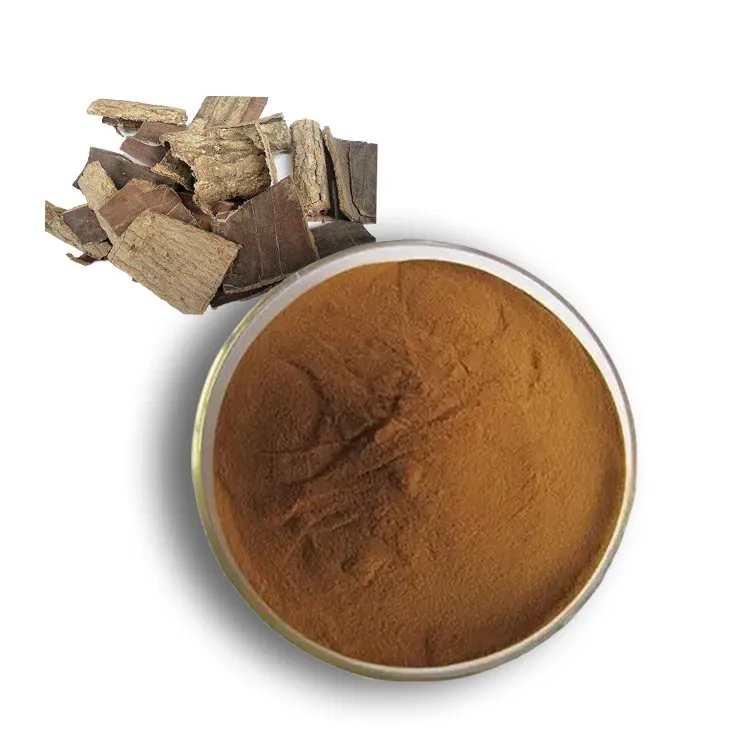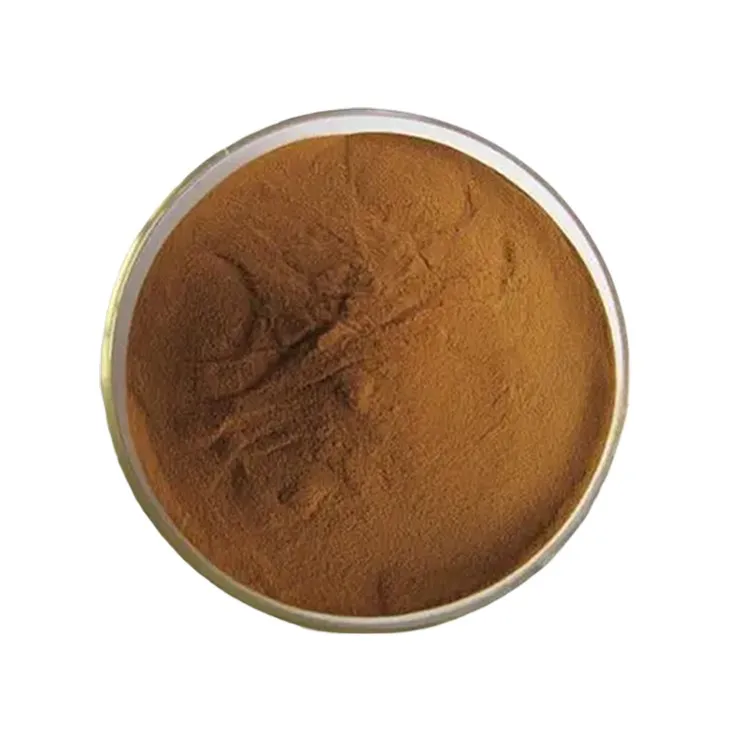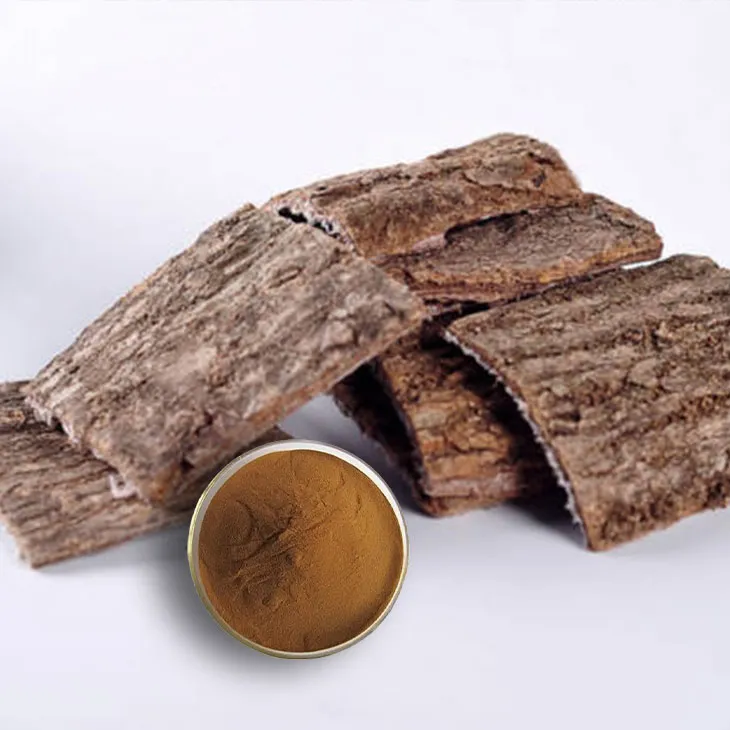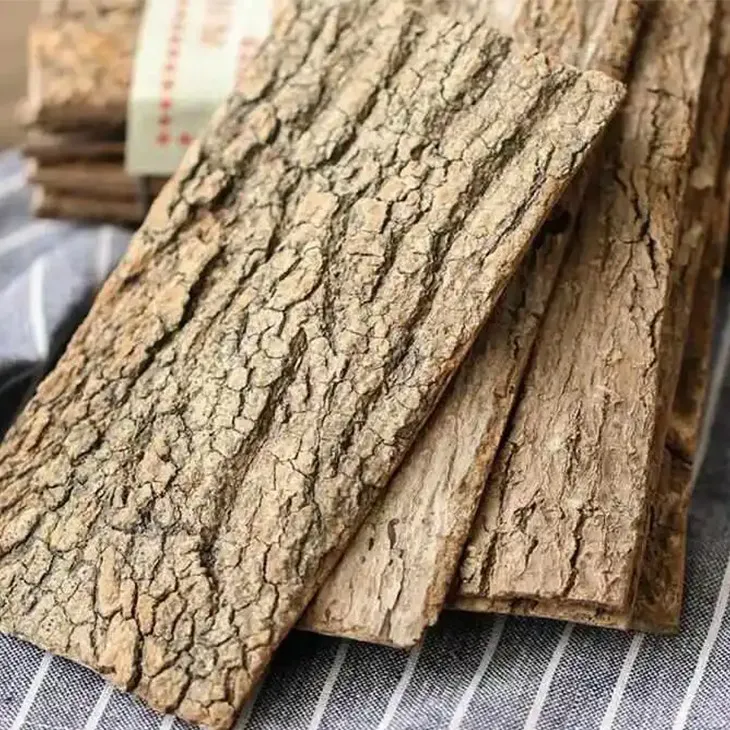- 0086-571-85302990
- sales@greenskybio.com
The Optimal Bioavailability of Eucommia ulmoides Extracts.
2024-11-26

1. Introduction
Eucommia ulmoides, a well - known traditional Chinese medicinal plant, has been used for centuries due to its numerous health - promoting properties. The extracts of Eucommia ulmoides contain a variety of bioactive compounds, such as flavonoids, lignans, and iridoids. However, the bioavailability of these extracts is a crucial factor that determines their effectiveness in vivo. Bioavailability refers to the fraction of an administered dose of a drug or active compound that reaches the systemic circulation and is available at the site of action. In the case of Eucommia Ulmoides Extracts, understanding and optimizing bioavailability is essential for maximizing their potential health benefits.

2. Factors Affecting the Bioavailability of Eucommia Ulmoides Extracts
2.1 Extraction Methods
The method used to extract the active compounds from Eucommia ulmoides can significantly influence their bioavailability. There are several common extraction methods, including:
- Solvent extraction: This is one of the most traditional methods. Different solvents, such as ethanol, methanol, and water, can be used. Ethanol - based extracts may have different solubility characteristics for the active compounds compared to water - based extracts. For example, some flavonoids may be more soluble in ethanol, which can affect their release and absorption in the body. If the extraction solvent does not effectively dissolve the key bioactive components, their bioavailability may be compromised.
- Supercritical fluid extraction (SFE): SFE, often using carbon dioxide as the supercritical fluid, has several advantages. It can operate at relatively low temperatures, which helps to preserve the integrity of heat - sensitive compounds. The selectivity of SFE can be adjusted by changing the pressure and temperature conditions. This method can potentially yield extracts with higher purity and better bioavailability as it can more precisely target the desired bioactive substances compared to traditional solvent extraction methods.
2.2 Chemical Composition of the Extracts
The chemical composition of Eucommia Ulmoides Extracts plays a vital role in bioavailability.
- Flavonoids: Flavonoids are a major class of bioactive compounds in Eucommia ulmoides. Their chemical structure can affect their solubility, permeability, and metabolism in the body. For instance, glycosylated flavonoids may need to be hydrolyzed in the gut before absorption, which can influence the overall bioavailability. Different flavonoids may also interact with each other or with other components in the extract, either enhancing or reducing their individual bioavailability.
- Lignans: Lignans in Eucommia ulmoides extracts have unique chemical properties. Some lignans may have relatively low solubility, which can limit their absorption. However, they may also form complexes with other substances in the extract or in the gastrointestinal tract, which could potentially improve their solubility and bioavailability. Their metabolism in the body also affects how much of the lignans are ultimately available for biological activity.
2.3 Particle Size and Physical Form
The particle size and physical form of the Eucommia ulmoides extracts can impact bioavailability.
- Nanoparticle formulation: Reducing the particle size of the extract to the nanoscale can enhance bioavailability. Nanoparticles have a larger surface - to - volume ratio, which can improve dissolution and absorption. For example, if the active compounds are encapsulated in nanoparticles, they can be protected from degradation in the gastrointestinal tract and more easily taken up by the cells lining the gut.
- Amorphous vs. crystalline form: Amorphous forms of the extract may dissolve more rapidly than crystalline forms. This is because the ordered structure of crystalline substances can limit the access of solvents and digestive enzymes, whereas amorphous forms lack this ordered structure and can be more easily broken down and absorbed.
2.4 Formulation and Delivery Systems
How the Eucommia ulmoides extract is formulated and delivered also affects its bioavailability.
- Encapsulation: Encapsulating the extract in various carriers, such as liposomes or polymeric microspheres, can protect the active compounds from degradation in the stomach and intestine. Liposomes, for example, can mimic the cell membrane structure and can fuse with the cell membranes in the gut, facilitating the transfer of the encapsulated compounds into the cells. This can significantly improve the bioavailability of the extract.
- Tablet vs. liquid formulation: Liquid formulations may have different bioavailability characteristics compared to tablet formulations. In general, liquid formulations may be absorbed more quickly as they do not require the disintegration step that tablets do. However, tablets can be designed with various excipients and coatings to control the release of the active compounds, which can also optimize bioavailability.

3. Strategies to Maximize the Bioavailability of Eucommia ulmoides Extracts
3.1 Optimization of Extraction Conditions
To maximize bioavailability, the extraction conditions need to be optimized.
- For solvent extraction, carefully select the solvent based on the solubility of the target bioactive compounds. For example, if a particular flavonoid is the main bioactive component of interest, choose a solvent that has high solubility for that flavonoid.
- In supercritical fluid extraction, fine - tune the pressure and temperature parameters. By adjusting these parameters, it is possible to obtain extracts with a higher concentration of the desired bioactive substances and better bioavailability.
3.2 Modification of Chemical Structure
Modifying the chemical structure of the bioactive compounds in Eucommia ulmoides extracts can improve their bioavailability.
- For flavonoids, enzymatic hydrolysis can be used to convert glycosylated forms to aglycone forms. The aglycone forms may have better solubility and permeability, thus enhancing bioavailability.
- Chemical derivatization of lignans can also be explored. By introducing certain functional groups, the solubility and metabolic stability of lignans can be altered in a way that favors better bioavailability.
3.3 Use of Novel Delivery Systems
Employing novel delivery systems can be an effective strategy.
- Developing targeted delivery systems, such as nanoparticles conjugated with ligands that can specifically bind to receptors in the gut, can enhance the uptake of the extract by the target cells. This can lead to increased bioavailability.
- Using mucoadhesive delivery systems can prolong the contact time of the extract with the gut mucosa. This allows for more complete absorption of the active compounds and improves bioavailability.

4. Conclusion
The bioavailability of Eucommia ulmoides extracts is a complex and multi - faceted topic. It is influenced by factors such as extraction methods, chemical composition, particle size, and formulation. By understanding these factors and implementing strategies to optimize them, it is possible to maximize the bioavailability of Eucommia ulmoides extracts. This, in turn, can unlock the full potential of this precious plant extract in promoting health and treating various diseases. Future research should continue to explore new extraction techniques, chemical modifications, and delivery systems to further enhance the bioavailability and effectiveness of Eucommia ulmoides extracts.

FAQ:
What are the main extraction methods for Eucommia ulmoides extracts?
Common extraction methods for Eucommia ulmoides extracts include solvent extraction, such as using ethanol or water - ethanol mixtures. Supercritical fluid extraction, typically with carbon dioxide, is also used. Solvent extraction is relatively straightforward and cost - effective, but may leave some impurities. Supercritical fluid extraction can provide a purer extract with better quality control.
How does the extraction method affect the bioavailability of Eucommia ulmoides extracts?
Different extraction methods can result in extracts with different chemical compositions and physical properties. For example, a more gentle extraction method may preserve more of the active compounds in their native form. If the extraction process is too harsh, it might degrade some of the key components that are responsible for bioavailability. Solvent - based extractions might introduce solvents that need to be removed completely to avoid any negative impact on bioavailability. Supercritical fluid extraction, on the other hand, can produce extracts with a higher concentration of bioactive compounds and better solubility, which can enhance bioavailability.
What role does formulation play in the bioavailability of Eucommia ulmoides extracts?
The formulation of Eucommia ulmoides extracts can significantly impact their bioavailability. For instance, if the extract is formulated into a nanoparticle - based delivery system, it can increase the surface area available for absorption in the body. Encapsulation can protect the active compounds from degradation in the gastrointestinal tract and enhance their transport across biological membranes. Additionally, combining the extract with appropriate carriers or excipients can improve its solubility and dissolution rate, which are crucial factors for bioavailability.
Are there any specific compounds in Eucommia ulmoides extracts that are important for bioavailability?
Yes, there are several compounds in Eucommia ulmoides extracts that play important roles in bioavailability. For example, flavonoids and lignans are two major classes of compounds. Flavonoids can have antioxidant properties and may also enhance the permeability of cell membranes, facilitating absorption. Lignans are known for their potential to interact with biological systems in a way that can improve the overall bioavailability of the extract.
How can we measure the bioavailability of Eucommia ulmoides extracts?
Bioavailability can be measured through various methods. One common approach is pharmacokinetic studies, which involve administering the extract to test subjects (usually animals in pre - clinical studies) and then monitoring the levels of the active compounds in the blood, plasma, or other relevant biological fluids over time. Another method is to study the absorption, distribution, metabolism, and excretion (ADME) of the extract in vitro or in vivo. These studies can provide valuable information about how the body processes the extract and how much of the active compounds are actually available to exert their biological effects.
Related literature
- Bioavailability and Pharmacokinetics of Eucommia ulmoides Extracts: A Review"
- "Enhancing the Bioavailability of Eucommia ulmoides Bioactive Compounds through Novel Formulation Strategies"
- "The Impact of Extraction Techniques on the Chemical Composition and Bioavailability of Eucommia ulmoides Extracts"
- ▶ Hesperidin
- ▶ Citrus Bioflavonoids
- ▶ Plant Extract
- ▶ lycopene
- ▶ Diosmin
- ▶ Grape seed extract
- ▶ Sea buckthorn Juice Powder
- ▶ Fruit Juice Powder
- ▶ Hops Extract
- ▶ Artichoke Extract
- ▶ Mushroom extract
- ▶ Astaxanthin
- ▶ Green Tea Extract
- ▶ Curcumin
- ▶ Horse Chestnut Extract
- ▶ Other Product
- ▶ Boswellia Serrata Extract
- ▶ Resveratrol
- ▶ Marigold Extract
- ▶ Grape Leaf Extract
- ▶ New Product
- ▶ Aminolevulinic acid
- ▶ Cranberry Extract
- ▶ Red Yeast Rice
- ▶ Red Wine Extract
-
Quercetin
2024-11-26
-
Kelp Extract Powder
2024-11-26
-
Jujube Extract
2024-11-26
-
Ginseng Root Extract
2024-11-26
-
Nettle leaf extract
2024-11-26
-
melatonin extract
2024-11-26
-
Saponin Extract
2024-11-26
-
Eucommia Ulmoides Extract
2024-11-26
-
Sea buckthorn oil
2024-11-26
-
Mangosteen extract powder
2024-11-26




















